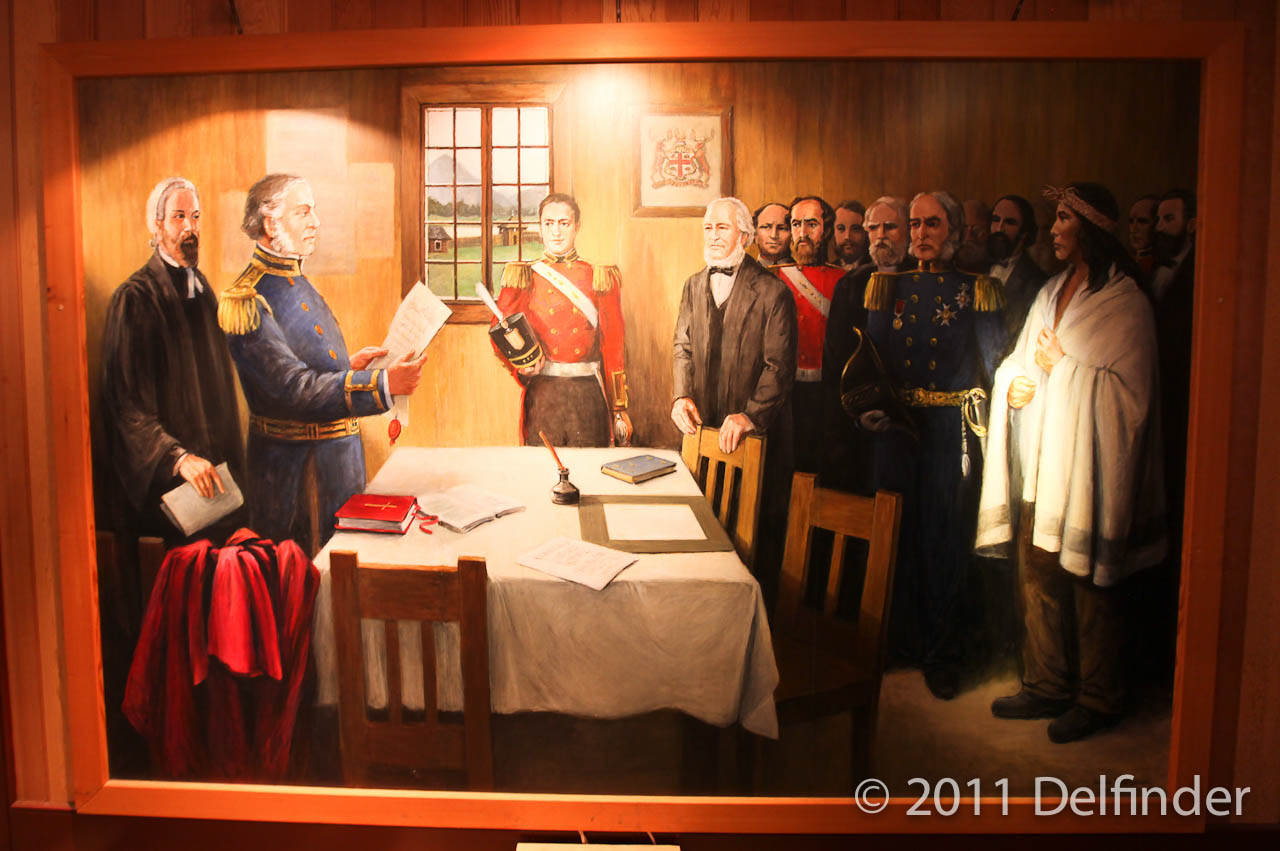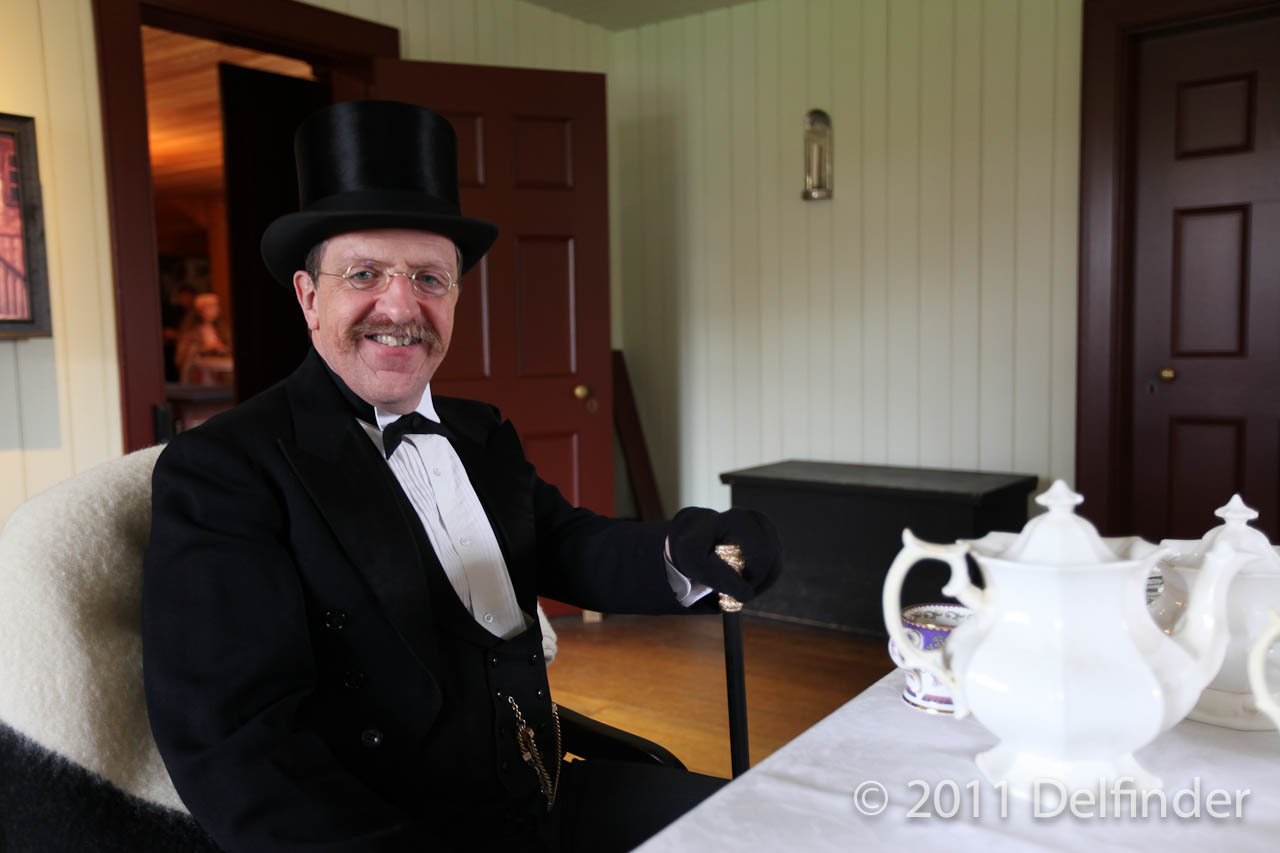 To Europeans 100 kilometers is a long distance, in Canada 100 years is like an eternity. Everything with a bit of history ends up in a museum. Museums are always very interesting, but usually after a short while, incredibly tiring. In Canada, however, some museums take you back to real life in former days so you can feel what it was like to be there. That is the case for Fort Langley (60 km east of Vancouver), founded in 1827 and where in 1858 the colony of British Columbia was founded. Fort Langley was – like many others –
To Europeans 100 kilometers is a long distance, in Canada 100 years is like an eternity. Everything with a bit of history ends up in a museum. Museums are always very interesting, but usually after a short while, incredibly tiring. In Canada, however, some museums take you back to real life in former days so you can feel what it was like to be there. That is the case for Fort Langley (60 km east of Vancouver), founded in 1827 and where in 1858 the colony of British Columbia was founded. Fort Langley was – like many others –
mainly a trading post of the Hudson Bay Company to trade goods with the Indians. A visit to the history of a young country.
Living History
 In German museums lengthy texts are presented on panels to explain a situation; here you’ll meet people in historical costumes, who breathe life into the nearly 200 years old fort with one original and several mock wooden buildings. By the fireplace in the center of the rectangular building a young woman in a long flowered dress and hat tells us stories of the former residents of the fort. The blacksmith forges an iron hook.
In German museums lengthy texts are presented on panels to explain a situation; here you’ll meet people in historical costumes, who breathe life into the nearly 200 years old fort with one original and several mock wooden buildings. By the fireplace in the center of the rectangular building a young woman in a long flowered dress and hat tells us stories of the former residents of the fort. The blacksmith forges an iron hook.
In the old times the hook is then exchanged for something else. Visitors who carry chocolate with them may have a good chance of doing business with the young smith. In the the other buildings apartments, warehouses and a cooperage are housed. At the fur press you can see how fur was pressed together for transport.
Three and a half beaver skins for a blanket
 In the Big House, in a room furnished with antique furniture, sits an employee of the Hudson Bay Company in top hats and tails. In this room the historic proclamation occurred which founded British Columbia. He tells visitors about the connection between the Hudson Bay Company and the fur trade.
In the Big House, in a room furnished with antique furniture, sits an employee of the Hudson Bay Company in top hats and tails. In this room the historic proclamation occurred which founded British Columbia. He tells visitors about the connection between the Hudson Bay Company and the fur trade.
The former teacher, who volunteers at the museum, passes me a lamb blanket from the Hudson Bay Company (HBC). I feel its weight; it is very heavy and more than 1 meter long. One visitor joked to wrap a whole family in it. But, as we are informed, the blanket is supposed to wrap around one person in a certain way so that it can withstand up to minus 40 degrees Celsius comfortably. A blanket like this was traded by HBC with the Indians for three and a half beaver pelts. Beaver fur was in great demand in Europe at that time because they were manufactured into trendy and very expensive felt. In no time he calculates the incredible profits for HBC. In return, the blankets were very valuable for the Indians, because they could not make such blankets themselves. Which party has the better long term benefits is quite obvious.
Who has earned the most during the gold rush
 Later, the gentleman in the tailcoat told us, gold was discovered in the Fraser River and the HBC sent some men to the southern United States. From there they reported huge gold finds which attracted crowds of gold diggers. HBC’s plan worked and they made huge profits. The company sold the gold diggers everything they needed, from tins of sardines to spades. From the many gold diggers few became really rich. Then there is applause from the visitors who have listened intently and there is a pensive mood in the room. History repeats itself.
Later, the gentleman in the tailcoat told us, gold was discovered in the Fraser River and the HBC sent some men to the southern United States. From there they reported huge gold finds which attracted crowds of gold diggers. HBC’s plan worked and they made huge profits. The company sold the gold diggers everything they needed, from tins of sardines to spades. From the many gold diggers few became really rich. Then there is applause from the visitors who have listened intently and there is a pensive mood in the room. History repeats itself.
{gallery}2011-10/fortlangley{/gallery}
